Did you know that it is easy to turn ordinary milk into a rainbow of crazy colors? With only four common kitchen items, kids are thrilled by the color explosion created by the hydrophilic and hydrophobic molecules in our magic ingredient!
Watch our demonstration video, then print out a materials list and instructions to plan for this simple and fun science experiment. Easy to understand explanation of how it works is included below.
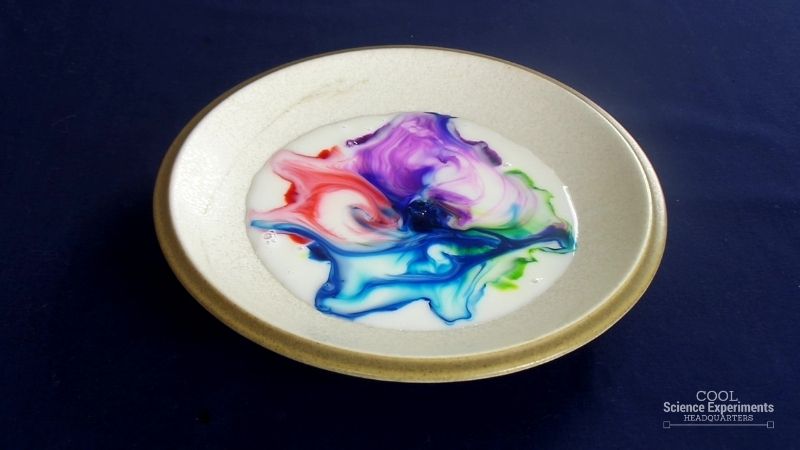
JUMP TO SECTION: Instructions | Video Tutorial | How it Works
Supplies Needed
- Milk (Must be either Whole or 2%)
- Food Coloring. The more colors the better
- Dish Soap
- Shallow Dish or Bowl
Magic Milk Science Lab Kit – Only $5
Use our easy Magic Milk Science Lab Kit to grab your students’ attention without the stress of planning!
It’s everything you need to make science easy for teachers and fun for students — using inexpensive materials you probably already have in your storage closet!
Magic Milk Experiment Instructions
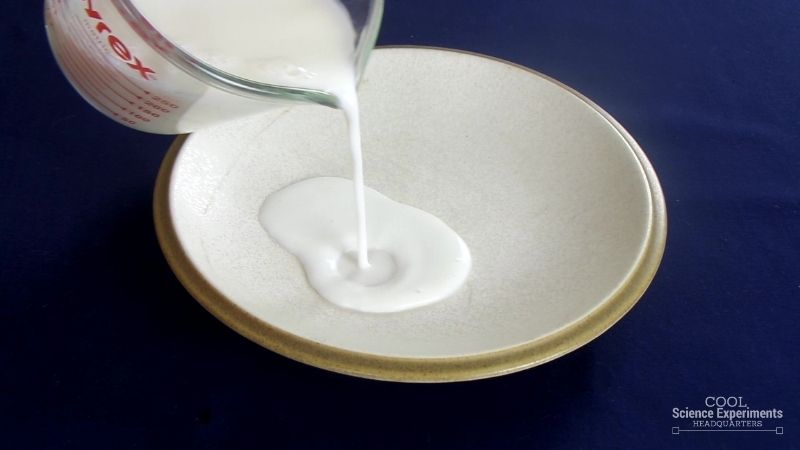
Step 1 – Pour some milk into a shallow dish or bowl until the milk covers the bottom.
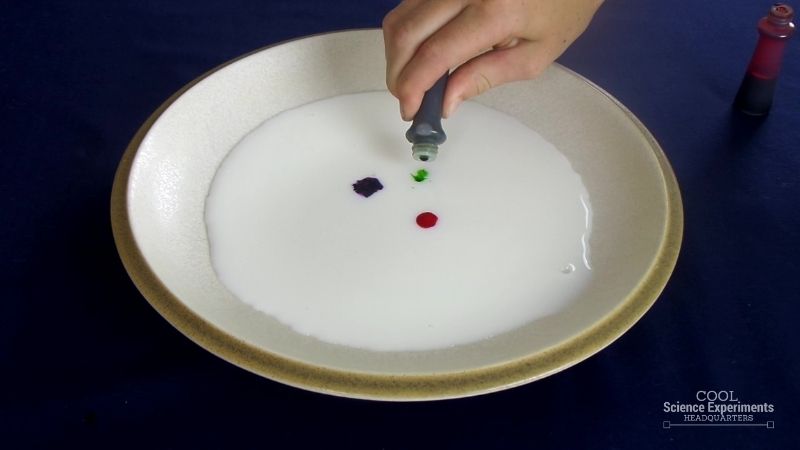
Step 2 – Add some drops of food coloring on the milk. You can use a variety of colors, just be sure to add 3-4 drops of each color.
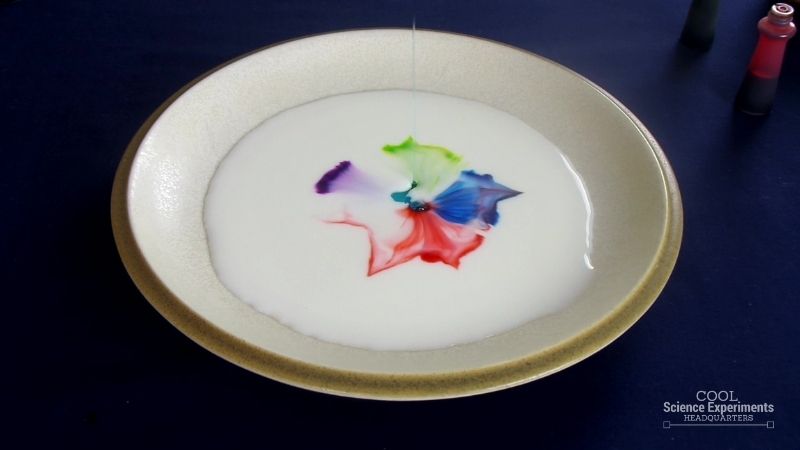
Step 3 – Add a drop of dish soap into the center of the milk.

Step 4 – Watch in amazement as the colors dances across the surface of the milk. Do you know what caused the colors to move around in the milk? Find out the answer in the how does this experiment work section below.
Video Tutorial
Detailed Magic Rainbow Milk Science Experiment Step by Step Instructions
How Does the Science Experiment Work
The key to the dancing colors in this experiment is soap! Soap molecules consist of a hydrophilic (“water-loving”) end and a hydrophobic (“water-fearing”) end. Water molecules are polar molecules that can dissolve other polar molecules. Fat (and oil) molecules are nonpolar molecules, so they cannot dissolve in water.
Milk is a mixture of water, fat, vitamins and minerals. When soap is added to the milk, it helps to separate the water and fat in the milk. When soap is mixed in with the fat and water, the hydrophobic end of the soap molecule breaks up the nonpolar fat molecules, and the hydrophilic end of the soap molecule links up with the polar water molecules. Now that the soap is connecting the fat and water, the nonpolar fat molecules can be carried by the polar water molecules.
As the soap molecules connect to the fat molecules, the molecules of the food coloring get pushed around everywhere resulting in an explosion of color! As the majority of soap molecules attach to the fat molecules and the soap spreads throughout the milk, the color explosion will slow and eventually stop. Add more soap and see if there are more fat molecules that haven’t attached to soap – if there are unattached fat molecules still, the color explosion will begin again.
This experiment works best with 2% and whole milk because they contain more fat.
Magic Milk Science Lab Kit – Only $5
Use our easy Magic Milk Science Lab Kit to grab your students’ attention without the stress of planning!
It’s everything you need to make science easy for teachers and fun for students — using inexpensive materials you probably already have in your storage closet!
Other Ideas to Try
Try this experiment again using milk with different fat percentages. Try it with skim milk, 1% milk, 2% milk, whole milk, half and half, and cream. Consider even trying evaporated milk and sweetened condensed milk. See how the amount of fat affects the explosion of color!
I hope you enjoyed the experiment as much as we did. Here are some printable instructions:
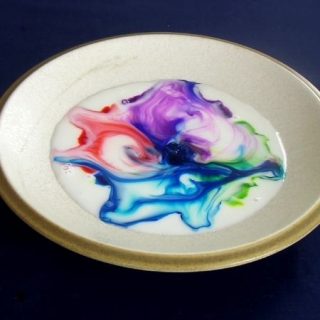
Magic Rainbow Milk Science Experiment
Materials
- Milk (Must be either Whole or 2%)
- Food Coloring. The more colors the better
- Dish Soap
- Shallow Dish or Bowl
Instructions
- Pour some milk into a shallow dish or bowl until the milk covers the bottom. Tip: Be sure to use either Whole or 2% Milk
- Add some drops of food coloring on the milk. You can use a variety of colors, just be sure to add 3-4 drops of each color.
- Add a drop of dish soap into the center of the milk
- Watch in amazement as the colors dances across the surface of the milk

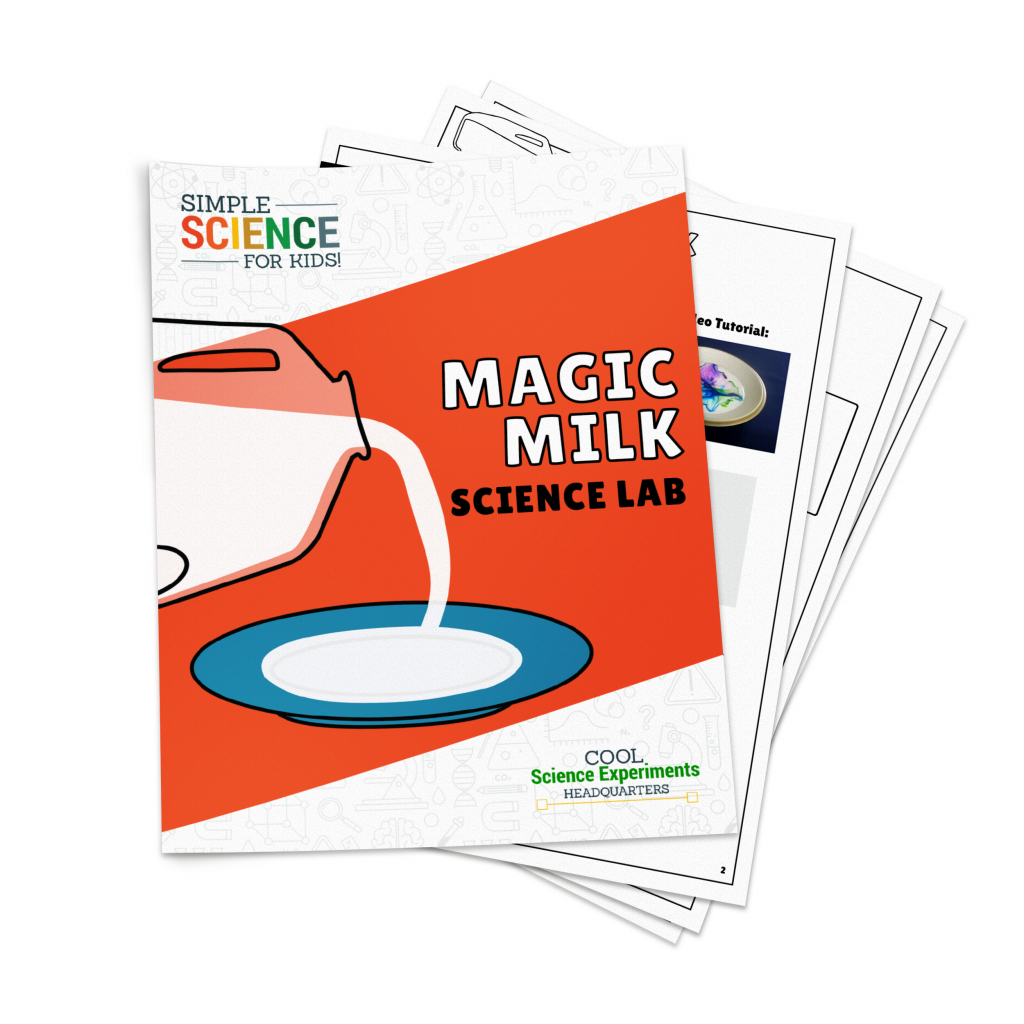

I did this in my science class and it worked really well! I looked at a lot of science experiments but couldn’t find
one I liked and then I found this at the last minute and it was really good so thank you for sharing:)
I agree, Emma. It has worked every time and was fun to watch! This explanation of the experiment is very informative. I have done this experiment a lot when I was younger. ☺️
It was pretty cool
This was a really fun activity!
Because of this experiment I got to the finals of my Sci Expo
It was actually pretty cool. I did this for my science project. Also, the colors came out really nice! i will definitely try again.
Thanks a million for these fantastic ideas and explanations!